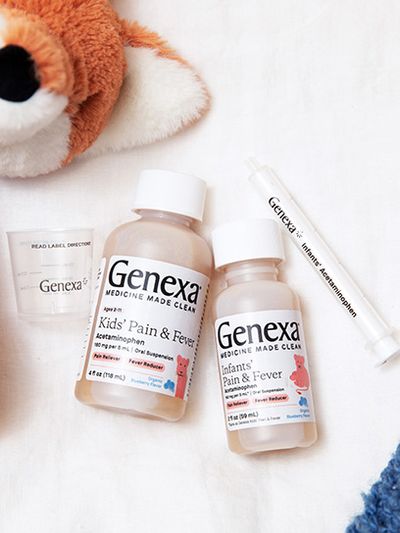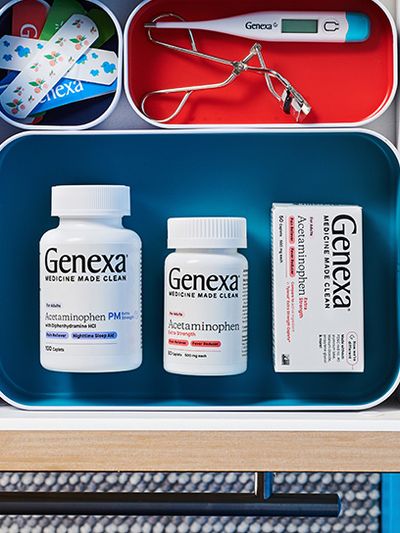How To Relieve Chest Tightness: 18 Tips
Learn How To Relieve Chest Tightness
Written by Camille Freking, MS Pharmacology - Genexa Partner on October 22, 2021
If you’ve ever felt pressure, pain, or fullness in your chest, you have likely experienced a symptom commonly referred to as chest tightness. Chest tightness can be scary, with many people assuming that they are having a heart attack, but the vast majority of the medical conditions that are known to contribute to chest tightness have nothing to do with the heart at all. We’ve put together 18 tips for how to relieve chest tightness.
What Is Chest Tightness?
Chest tightness is a symptom of many different conditions that is commonly described as pain, discomfort, or pressure that occurs between the top of the abdomen and the lower neck. Chest tightness can be localized, occurring in just one area, or can be felt all over the chest.
Some of the most common causes of chest tightness include:
- Chest congestion caused by a respiratory infection
- Pneumonia
- Shingles
- COVID-19
- Asthma
- Coronary artery disease (CAD)
- Chronic obstructive pulmonary disease (COPD)
- Pulmonary hypertension
- Pericarditis
- Mitral valve prolapse (MVP)
- Pulmonary embolism
- Anxiety
- Acid reflux
- Gallstones
- Peptic ulcer
- Esophageal disorders
- Muscle strain
How Can You Relieve Chest Tightness?
The best tips to relieve chest tightness depend on the cause of your chest tightness. As noted above, there are a wide variety of conditions that can cause chest tightness, so trying to determine the cause is the first step in finding relief.
Respiratory Infections
If you are experiencing chest tightness as the result of a respiratory infection, such as a cold, your chest tightness is likely occurring as a result of excess mucus buildup in the lungs and airways.
There are several ways to improve this kind of chest tightness, including:
- Staying hydrated: Thick, dry mucus is hard to expel through a cough or your nose, so adding moisture helps to thin and loosen the mucus, making it easier to get rid of. Taking in extra fluids also ensures that you are well hydrated. Warm liquids are particularly helpful, so enjoy a bowl of chicken noodle soup or a cup of tea.
- Use decongestant medication: Decongestant medications can be purchased over the counter and may be very helpful in reducing chest congestion and nasal congestion. These medications work by narrowing dilated blood vessels in the nasal passages and lungs, helping to reduce inflammation and make mucus easier to expel. Note that decongestant medications should not be used for more than three days because they have the potential to cause a rebound effect, and they’re not considered safe for children under the age of four.
- Use a humidifier at night: As noted, one of the common causes of chest congestion and chest tightness is thick mucus that gets stuck to the inside of the lungs. One way to loosen and thin the mucus is to use a humidifier by your bedside. As you breathe in the moist air, that moisture will make its way into your lungs as you sleep, helping to loosen and thin the mucus. In the morning, you may find that it’s easier to cough up and expel the mucus, relieving some of the pressure in your chest.
- Try a vapor rub: Vapor rubs are topical creams that are rubbed onto the chest and throat, and they typically contain menthol, an ingredient that provides a cooling sensation that can help you breathe more easily. Although there is no scientific evidence to suggest that the formulas help to clear the airways, they may feel soothing and make you feel a bit better.
Gastrointestinal Causes
Chest tightness that occurs as a result of gastrointestinal distress may be relieved by taking the following actions:
- Eat smaller meals more frequently: Some people experience chest tightness due to acid reflux, which can worsen after eating large meals. If you typically eat three large meals per day, try eating five smaller meals with nutritious ingredients throughout the day. The smaller amounts put less pressure on your stomach and are less likely to force stomach acid through your esophagus, minimizing acid reflux symptoms.
- Stop smoking: Acid reflux is often worsened by smoking or using tobacco products. Tobacco is known to weaken the lower esophageal sphincter, which seals off your stomach from your esophagus and prevents acid from rising into your throat. Quitting smoking will not only help your acid reflux, it can also help your lungs to heal and make it easier to breathe in general.
- Eat a reflux-friendly diet: Certain foods, such as tomatoes, onions, garlic, chocolate, fried foods, and fatty foods are known to make symptoms of acid reflux worse, as are certain beverages, including those that contain alcohol or caffeine or are carbonated. Steer clear of these foods and drinks as much as possible and focus on eating whole foods that are nutritious, low in fat, and high in protein.
- Talk to your healthcare provider about medication: Some people experience a condition called gastroesophageal reflux disease (GERD), which causes chronic acid reflux that may not be improved with dietary changes. If you find that making reflux-friendly changes in your lifestyle does not improve your chest tightness and other symptoms, talk to your doctor about using medication. If your doctor indicates that you should take reflux medication, be sure to take it exactly as directed.
Muscular Causes
Injury to the muscles in your chest can also cause chest tightness and pain.
- If you believe that your chest tightness results from a muscle injury, try following these tips:
- Elevate your chest: Keeping your chest elevated will help to reduce inflammation and swelling to the injured area. Sit upright and maintain good posture throughout the day, and try to sleep in an elevated position, such as in a recliner or propped up on extra pillows, until you feel better.
- Ice the injury: One of the fastest ways to reduce inflammation and pain is by icing the affected area. Ice the injured area for approximately 20 minutes at a time, three times a day.
- Add compression: Use a compression device, such as an ace bandage or brace, to provide extra support for the injured area and reduce inflammation. This can help relieve the pain caused by chest tightness.
- Rest as needed: If you find that your chest tightness is worse after certain types of activities or exercises, stop doing the activity immediately and allow yourself to rest for several days. When you return to the activity, take it slowly and stop if you experience more pain.
Anxiety
One of the most common causes of chest tightness is anxiety, particularly in people who have panic attacks. However, any type of anxiety can contribute to chest tightness.
Try these tips if you believe that you are experiencing chest tightness as the result of anxiety:
- Meditation: Meditation and grounding can help take you out of your anxious feelings by encouraging you to focus on the feelings in your body and bring your attention to the present. You’ll focus on your breathing and ask yourself simple questions like how each part of your body feels. As your breathing slows and calms, you may find that your chest tightness disappears.
- Focused breathing: Chest tightness can occur when we’re anxious because we begin to take rapid, shallow breaths, which makes the feeling worse. Try practicing focused breathing by methodically inhaling for a count of four, holding the breath for a count of four, and exhaling for a count of four. This strategy can help you to feel more relaxed, slow your breathing, and ease chest tightness.
- Get some exercise: Exercise is one of the most effective ways to manage anxiety symptoms. Exercising or stretching can help relieve tension in your muscles that may be caused by anxiety. After your workout, you’ll likely feel much more calm and you’ll be getting healthier to boot!
Lung Diseases
Lung diseases like COPD or emphysema can contribute to chest tightness, leaving you short of breath and in pain.
There are few ways to help chest tightness caused by pulmonary issues:
- Rest: Many people with chronic pulmonary issues are not able to exert themselves as strenuously as they previously could, so rest if you feel like your symptoms are getting worse with certain activities. The best form of exercise might be a light walk, which gets your legs moving without straining your lungs and causing tightness.
- Steer clear of your triggers: People with chronic pulmonary issues may find that their symptoms are made worse by certain triggers, so avoid these whenever possible.
- Take your medication as directed: If you have been prescribed medication to help your chest tightness, make sure to use it as directed to keep your symptoms at bay.
Summary
Because chest tightness has so many potential causes, it’s important to try and figure out what might be causing your chest tightness before attempting to treat it.
Chest tightness can be caused by respiratory infections, gastrointestinal problems, muscular problems, anxiety, and lung disease.
If you experience severe chest tightness and feel like you can’t breathe, seek emergency medical treatment regardless of the suspected cause.





